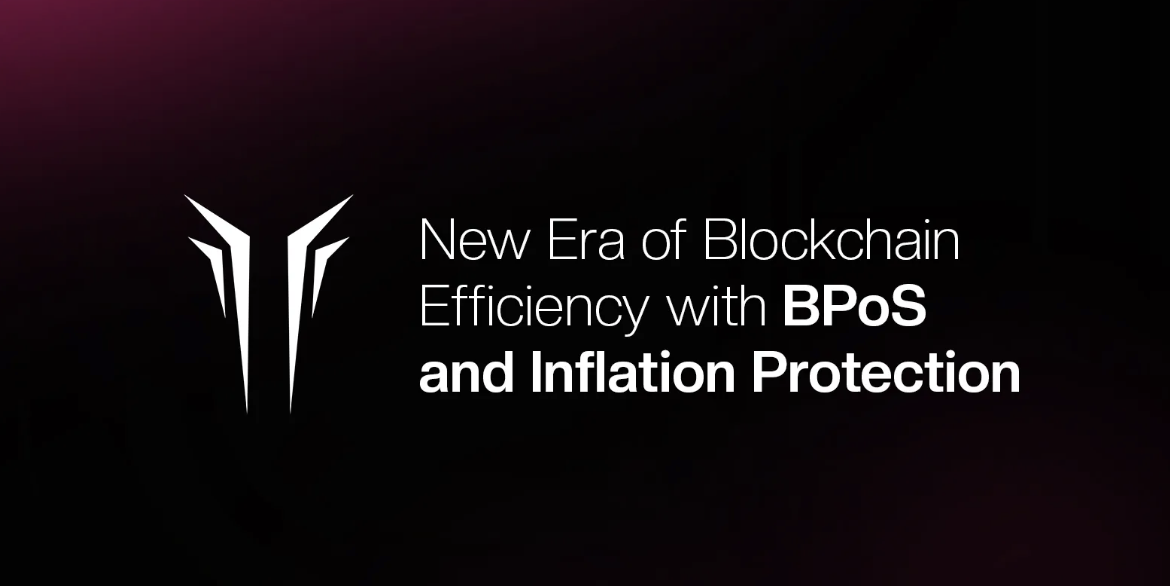As the blockchain landscape continues to evolve, the debate over scalability, sustainability, and decentralization remains at the forefront. Many existing networks struggle with rising transaction fees, validator centralization, and inflationary tokenomics that erode long-term value. TAN Blockchain, an EVM-compatible Layer-1 network, is addressing these challenges with a revolutionary approach: a Block Per Reward Proof of Stake (BPoS) consensus mechanism combined with an Inflation Protection Model designed to sustain long-term network efficiency and economic stability.
By integrating a Block Per Reward Proof of Stake (BPoS) consensus mechanism with an Inflation Protection Model, TAN aims to resolve many of the persistent challenges that have hindered blockchain growth. The result is a network designed for both efficiency and longevity, offering a sustainable alternative to traditional Proof-of-Stake (PoS) and Proof-of-Work (PoW) systems.
The Challenge of Existing Blockchain Models
Most blockchain networks operate under one of two primary consensus mechanisms:
• Proof-of-Work (PoW): The original consensus model used by Bitcoin, PoW relies on computational power to validate transactions. While secure, it is energy-intensive and slow, leading to concerns about scalability and environmental impact.
• Proof-of-Stake (PoS): Introduced as a more energy-efficient alternative, PoS allows validators to stake tokens to participate in block validation. However, PoS often leads to wealth concentration, where those with the largest stakes control the network, creating centralization risks.
TAN’s BPoS model refines the PoS mechanism by prioritizing active participation over stake size, ensuring a more decentralized validator network while maintaining efficiency.
What Makes TAN’s BPoS Different?
TAN’s Block Per Reward Proof of Stake (BPoS) introduces a fundamental shift in validator incentives. Unlike traditional PoS, where staking rewards are tied to the number of tokens held, BPoS rewards validators based on the number of blocks they propose and secure, not just their stake size.
This approach offers several advantages:
-
Fair Validator Rewards: Smaller validators have the same earning potential as larger ones, reducing the risk of wealth-based centralization.
-
High-Speed Transactions: With 5-second block times, TAN achieves near-instant transaction finality.
-
Secure & Decentralized: BPoS maintains strong network security while preventing the formation of validator monopolies.
By aligning validator incentives with network security rather than wealth accumulation, TAN’s BPoS model encourages a broader, more diverse group of participants to secure the network.
Tackling Inflation with a Sustainable Economic Model
One of the biggest concerns in blockchain is inflation—excessive token issuance can dilute value and discourage long-term investment. TAN’s Inflation Protection Model takes a structured approach to supply control, ensuring long-term sustainability.
Key features of the model include:
-
Gradual Supply Minting: Unlike inflation-heavy networks, TAN mints supply gradually over 80 years, following a predictable release schedule.
-
Halving Events: Inspired by Bitcoin’s scarcity model, TAN’s block rewards halve every four years to maintain long-term value.
-
100% Transaction Fee Burning: Unlike networks that burn only a portion of fees, TAN permanently removes all transaction fees from circulation, reducing supply over time.
-
Burn Subsidy Mechanism: While the burning mechanism reduces excess supply, TAN balances this by offering ecosystem subsidies to incentivize validator participation and developer growth.
This combination of mechanisms ensures that TAN’s economic model is self-sustaining, deflationary, and resistant to long-term devaluation—a critical step forward in blockchain financial architecture.
A Developer-First Ecosystem
Beyond efficiency and sustainability, TAN is built with developer accessibility in mind. The network’s EVM compatibility ensures seamless migration for existing Ethereum-based dApps, while its low transaction costs make it an attractive choice for developers looking to scale applications without high gas fees.
By integrating support for widely used tools like MetaMask, Web3.js, and Hardhat, TAN lowers the technical barriers to blockchain development, making it easier for builders to innovate.
Real-World Applications and Future Growth
TAN’s architecture positions it as a versatile blockchain suitable for a range of applications, including:
• Decentralized Finance (DeFi): High-speed, low-cost transactions make TAN an ideal foundation for DeFi protocols.
• Cross-Border Payments: Faster transactions and lower fees offer a more efficient alternative to traditional financial systems.
• NFTs & Gaming: Scalable infrastructure ensures smooth NFT minting and in-game transactions.
As blockchain adoption expands, TAN’s focus on efficiency, decentralization, and sustainability sets it apart from legacy networks. The project’s roadmap includes further enhancements in network interoperability, governance mechanisms, and real-world integrations to drive broader adoption.
Next Steps: Engaging the Community Through Devnet
To encourage on-chain participation and showcase the network’s capabilities, TAN has launched its Devnet activity, allowing users to experience its economic model firsthand.
Participants can:
1️⃣ Claim testnet tokens via the faucet.
2️⃣ Burn TAN to contribute to network activity.
3️⃣ Earn rewards based on contribution, with rewards fully unlocked at TGE.
This initiative not only tests TAN’s Inflation Protection Model and BPoS system in action but also rewards early adopters who engage with the network.
Alongside its technological innovations, TAN is offering early investors a unique opportunity through its Super Seed Sale—the first phase of its funding rounds.
Final Thoughts: A Blueprint for the Future of Blockchain
The blockchain space is evolving rapidly, but scalability, decentralization, and inflation control remain critical challenges. With its BPoS consensus and Inflation Protection Model, TAN provides a forward-thinking solution that prioritizes both economic sustainability and network fairness.
As the industry moves towards more efficient and decentralized solutions, TAN’s model offers a glimpse into the future of blockchain consensus.
To learn more visit https://tan.live/ and participate in the network, visit blockbuilders.tan.live
Disclaimer: This is a sponsored press release and is for informational purposes only. It does not reflect the views of Crypto Daily, nor is it intended to be used as legal, tax, investment, or financial advice.
